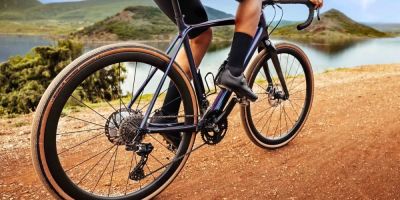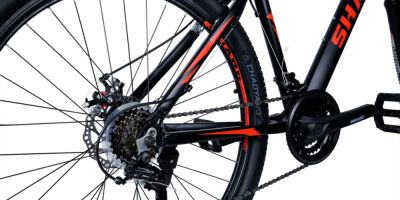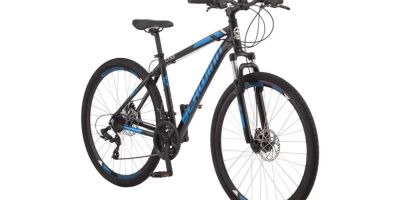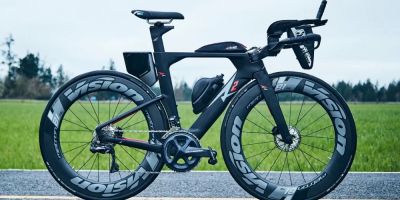How to Choose the Best Bike Lock
As an avid cyclist, I’ve spent years riding through cities and scenic trails, and one of the things I always worry about is my bike’s security. Bikes are expensive, and they’re prime targets for thieves, especially in busy urban areas. That’s when I realized how important it is to choose the best bike lock that suits my needs. Over time, I’ve experimented with different types of locks, and I’ve learned that the right bike lock can make all the difference in ensuring your bike stays where you left it.
In this article, I’ll share my experience and guide you through the process of choosing the best bike lock. Whether you're new to cycling or an experienced rider, securing your bike is essential to protecting your investment. There are several types of locks, and each one offers different levels of security. I'll break down the options available, explain the features you should consider, and help you make an informed decision on the best bike lock for you.
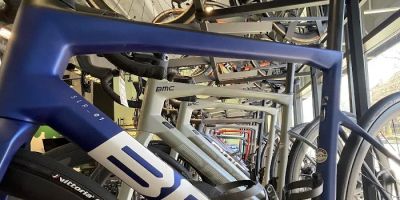
Conte's Bike Shop
3449 Wilson Blvd, Arlington, VA 22201, USA
1. Types of Bike Locks
The first step in choosing the best bike lock is understanding the different types available. I found that choosing the right one depends on where and how often you use your bike. Whether you're commuting daily, leaving your bike in a public area for a short period, or storing it overnight, the type of lock can influence its effectiveness. Let’s take a look at the most common types of bike locks:

Bicycle Barn LLC
839 Reading Rd, East Earl, PA 17519, USA
1.1 U-Locks
U-locks are one of the most popular and secure options available. These locks are shaped like a “U” and are typically made of hardened steel, making them resistant to cutting and prying. I’ve used a U-lock for years, and its solid build gives me confidence whenever I leave my bike parked. One of the key reasons U-locks are so effective is because they secure the frame and wheels, making it difficult for thieves to break through. Keep in mind that no lock is entirely foolproof, but a good U-lock provides a high level of security for most urban environments.
When choosing a U-lock, make sure it’s the right size for your bike. A lock that’s too large or too small can make it easier for thieves to gain access. Additionally, look for locks with high-security ratings, as these locks are tested for resistance to common bike theft tools like hammers, saws, and bolt cutters.
1.2 Chain Locks
Chain locks offer more flexibility than U-locks, as they can be wrapped around various parts of the bike and a fixed object. I’ve found that chain locks are particularly useful when locking multiple bikes together or securing bikes to larger, more robust posts. The downside of chain locks is that they are usually heavier than U-locks, which can be a concern if you prefer a lightweight option. However, the added flexibility and higher security are worth it if you’re willing to carry a little extra weight.
Look for chain locks made of thick, hardened steel links for added durability. Some high-end chain locks even come with protective covers to prevent scratching your bike’s frame. These types of locks also come with a variety of locking mechanisms, including key-based and combination locks.
1.3 Folding Locks
Folding locks are relatively new to the market and offer a great balance of portability and security. They consist of several metal bars connected by rivets, allowing the lock to fold into a compact size when not in use. I’ve used a folding lock on trips where space is limited, and it’s a fantastic option if you don’t want to lug around a bulky U-lock or chain. Although they’re not as robust as a U-lock in terms of protection, they offer a reasonable level of security with the added benefit of convenience.
Folding locks are particularly useful if you need something easy to store in a backpack or pocket. They typically provide decent resistance to cutting tools, but they’re better suited for areas with moderate theft risk rather than high-crime zones.
1.4 Cable Locks
Cable locks are the lightest and most flexible option, but they are also the least secure. While they are convenient for quick stops, they can be easily cut with basic tools. I’ve used cable locks for very short stops or in areas where the theft risk is low, but I would never rely on them for extended periods or in high-risk areas. These locks are usually best for casual cycling in low-risk environments where the bike is only unattended for a short time.
If you’re considering a cable lock, choose one with a thick, reinforced steel cable and a sturdy locking mechanism to add some level of security. However, if you’re in a high-theft area, it’s better to opt for a stronger U-lock or chain lock instead.
2. Key Features to Consider When Choosing a Bike Lock
Now that you understand the types of bike locks available, it’s time to think about the key features that should influence your decision. Over time, I’ve learned that picking the right lock isn’t just about its type but also about several other factors that contribute to its effectiveness. Here are the main features to consider:
2.1 Security Level
When selecting a bike lock, always check its security rating. Some locks are rated based on their resistance to cutting, picking, and other theft techniques. There are various security grading systems used by manufacturers, but some locks undergo testing from organizations like Sold Secure or ART. The higher the rating, the more resistant the lock is to being broken into. I always check the lock’s rating to ensure it matches my needs—especially if I’m locking my bike in a high-theft area.
2.2 Locking Mechanism
The locking mechanism is another crucial factor in determining how secure your bike lock will be. There are two main types: key-based and combination locks. Key-based locks are generally more secure because they’re harder to crack than combination locks. However, combination locks are more convenient since you don’t need to worry about losing a key. Personally, I prefer a key-based U-lock for the added peace of mind, but if you’re using a combination lock, make sure it’s from a reputable brand.
2.3 Weight and Portability
If you plan on carrying your lock around with you, weight and portability are important factors to consider. U-locks and chain locks tend to be heavier, while folding and cable locks are lighter and more compact. On days when I’m riding long distances, I prefer a folding lock because it’s easy to carry and doesn’t take up much space in my bag. However, if security is the top priority, a heavier lock might be worth the extra effort to carry.
3. Price vs. Value – Is It Worth the Investment?
When it comes to bike locks, you get what you pay for. A cheap lock might seem like a good deal, but it’s often a false economy. In my experience, investing in a high-quality lock is worth the peace of mind it provides. Consider how much your bike is worth and how much you’re willing to spend on its security. While high-end locks can be expensive, they offer significantly better protection against theft, especially in high-crime areas.
Remember, your bike is an investment, and a good lock can help protect that investment. Don’t let a few extra dollars stop you from purchasing a lock that will keep your bike safe and secure for years to come.
4. How to Use Your Bike Lock Effectively
Buying the best bike lock is only part of the equation. How you use the lock also plays a crucial role in keeping your bike safe. I’ve learned a few tricks over the years to ensure my bike stays secure:
4.1 Lock the Frame and Wheels
Always make sure to lock both the frame and wheels to a solid, immovable object. Thieves often target the wheels, so using a lock that can secure both the frame and wheels will make it much harder to steal your bike. I also recommend using two different types of locks (e.g., a U-lock and a chain lock) for added security.
4.2 Choose a Well-Lit, Busy Location
Where you park your bike is just as important as the lock you use. Try to park in a well-lit area that’s busy and visible to others. I’ve found that parking near other bikes or in high-traffic areas significantly reduces the chances of theft.
4.3 Don’t Leave Your Bike for Long Periods
Lastly, avoid leaving your bike locked up for extended periods. Even the best locks can be compromised if left unattended for too long. I always try to park my bike for no longer than a couple of hours, especially in high-risk areas.


